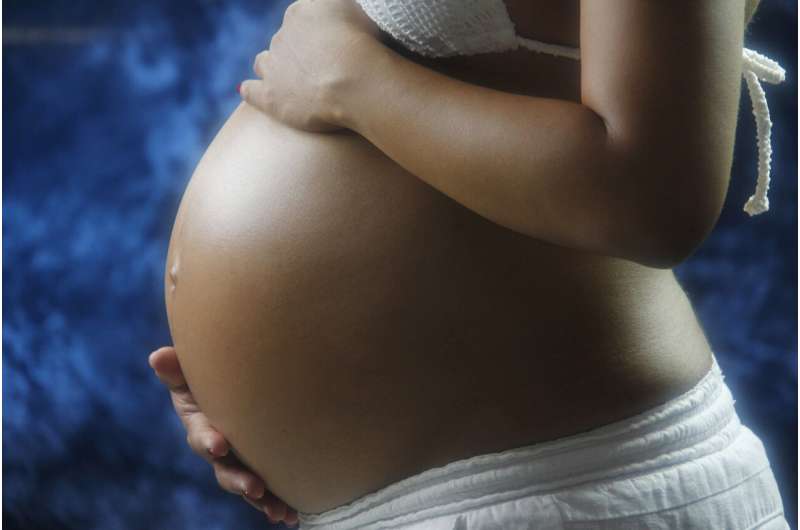Hypertension and anemia drive racial gaps in birth complications, studies find

Two common, treatable medical conditions—hypertension and iron-deficiency anemia—contribute significantly to racial disparities in childbirth complications, according to a pair of new studies from the Stanford School of Medicine.
The studies, which were published Sept. 7 in Obstetrics & Gynecology, show that high blood pressure and anemia are more common in pregnant people from non-white racial/ethnic groups, driving higher rates of birth complications such as severe preeclampsia and hemorrhage in these populations.
The findings are important because racial disparities in severe birth complications have persisted even in places like California, where statewide quality-control projects have improved care for such complications.
“Clearly, just focusing on the bigger picture of birth complications and maternal mortality is not enough. We have to understand what drives the inequalities and tailor our interventions to them,” said Stephanie Leonard, Ph.D., an assistant professor of obstetrics and gynecology who led the study on hypertension.
Greater risk among minority women may reflect that they have less access to prenatal care, but it may also be linked to problems with previous medical guidelines for treating anemia and hypertension in pregnancy, according to the researchers.
Until 2021, recommendations for treating prenatal anemia differed by race, with Black women facing a higher threshold for treatment.
“There were different cutoffs by race and ethnicity that hadn’t been demonstrated to have biological plausibility,” said Irogue Igbinosa, MD, an instructor in obstetrics and gynecology and the lead author of the anemia research. The old guidelines had been developed by measuring anemia in different populations, noting that it was more common in Black women, then assuming—without evidence—that the discrepancy must be intrinsic to race rather than a reflection of social determinants of health.
Also, until 2022, the recommended threshold for hypertension treatment in pregnancy was higher than for non-pregnant individuals, out of concern that over-treatment of high blood pressure could be harmful to the fetus without benefiting the mother. However, recent studies have reversed this recommendation, demonstrating benefits for the mother and no harm to the fetus if hypertension is treated at a lower threshold.
“The more evidence we use to standardize our approach to prenatal care, the more we can address and dismantle the effects of implicit bias on health care delivery,” Igbinosa said. Studying the links between birth complications and high blood pressure or iron-deficiency anemia is especially important because good treatments already exist, she said, adding, “This is something we can intervene on; it’s actionable.”
Preventing severe preeclampsia, kidney failure
Biological changes that support fetal growth during pregnancy have a big impact on the mother’s circulatory system. Blood pressure initially drops, then rises to pre-pregnancy levels by the third trimester. This means that hypertension is easily missed, especially if a patient’s medical records lack a pre-pregnancy blood pressure measurement. Maternal blood volume also increases by 50%, meaning the pregnant person’s blood becomes more dilute. Each milliliter has less hemoglobin, the blood’s oxygen-carrying protein; beyond a certain threshold, this dilution is classified as anemia.
The new research findings strongly suggest that anemia and hypertension should be monitored and treated when necessary.
The hypertension study analyzed medical and birth records for almost 8 million pregnancies that occurred in California, Michigan, Oregon, Pennsylvania and South Carolina from 2008 to 2020. The researchers assessed rates of chronic hypertension for the entire group and among members of different racial and ethnic groups.
They calculated how much chronic hypertension contributed, for everyone in the study, to the incidence of several birth complications thought to be connected to high blood pressure: severe preeclampsia or eclampsia (high blood pressure that can lead to seizures), placental abruption (early placental detachment from the uterine wall), postpartum hemorrhage, cerebrovascular accident (stroke), pulmonary edema (dangerous accumulation of fluid in the lungs), acute kidney failure and all severe birth complications measured together.
Of the pregnancies analyzed, 2.1% were affected by chronic hypertension. Patients with chronic hypertension were much more likely than those without it to have several pregnancy and birth complications. They were 10 times as likely to experience severe preeclampsia or eclampsia, nearly six times as likely to have acute kidney failure, and almost five times as likely to have pulmonary edema, for example.
For all pregnancies, the researchers estimated that chronic hypertension explained nearly one-quarter of all cases of severe preeclampsia and eclampsia, 13.6% of cases of acute renal failure, and 10.7% of cases of pulmonary edema.
The prevalence of hypertension differed by racial and ethnic groups, with Black (5.1%), Native Hawaiian/Pacific Islander (2.9%) and American Indian-Alaska native (2.5%) populations all having more hypertension than the population average.
Chronic hypertension contributed most strongly to severe obstetric complications and acute renal failure among Black and Native Hawaiian-Pacific Islander populations and least among white populations, the study found.
Anemia rates rising for everyone
The anemia study examined about 4 million California pregnancies and births from 2011 to 2020. Pregnant patients with inherited forms of anemia (genetic diseases that affect the formation of red blood cells) were not included in the study because the researchers wanted to focus on iron-deficiency anemia, which can be treated by improving diet or taking iron supplements. The needs of the growing fetus often deplete the mother’s iron stores, making nutritional anemia a common problem for pregnant women around the world.
Patients were classified as having anemia during pregnancy on the basis of current guidelines from the Centers for Disease Control and Prevention, which are the same for all races. The scientists looked at the links between anemia, race and a variety of birth complications.
Anemia in pregnancy was common, though rates of anemia differed by the race: It affected 21.6% of Black, 18.2% of Pacific Islander, 14.1% of American Indian/Alaska Native, 14% of multiracial, 12.6% of Hispanic, 10.6% of Asian and 9.6% of white pregnant patients. Anemia rose sharply during the study period for all racial/ethnic groups, doubling to tripling in all groups.
Patients with anemia were much more likely than those without anemia to experience severe birth complications. These complications were seen in 6.5% of Pacific Islander patients with anemia, followed by American Indian/Alaska native (6.3%), Black (5.1%), Hispanic (4.6%), multiracial (4.2%), Asian (3.8%) and white (3.4%) patients with anemia. For women without anemia, the rate of severe birth complications ranged from 1% to 1.8% among various racial groups.
Anemia explained about 20% of the risk of severe birth complications—particularly hemorrhage requiring a blood transfusion—among multiracial mothers, Black mothers and Hispanic mothers, and about 16% of the risk in American Indian-Alaska native and Pacific Islander moms.
“About one in five or one in six cases of severe birth complications are due to anemia,” Igbinosa said. “That really stood out.”
Igbinosa’s team is conducting a study in which they are interviewing Black women who had anemia during pregnancy to get a better picture of what treatment they received, if any.
“We need to understand more at the population level: What is your access to healthy nutrition in pregnancy? Were you told of your anemia diagnosis and provided general information of anemia in pregnancy? What have you been offered?” she said. “Anemia is preventable and treatable, and I think talking to communities that are disproportionately impacted by anemia is integral to providing solutions.”
More information:
Stephanie A. Leonard et al, Chronic Hypertension in Pregnancy and Racial–Ethnic Disparities in Complications, Obstetrics & Gynecology (2023). DOI: 10.1097/AOG.0000000000005342
Irogue I. Igbinosa et al, Racial and Ethnic Disparities in Anemia and Severe Maternal Morbidity, Obstetrics & Gynecology (2023). DOI: 10.1097/AOG.0000000000005325
Journal information:
Obstetrics & Gynecology
Source: Read Full Article


